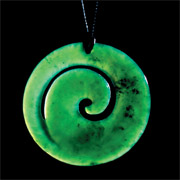Queenstown to Greymouth - Day Four
Hokitika to Greymouth

Today it’s a short drive from Hokitika to Greymouth and so after a light breakfast in-house we spend the morning exploring the jade galleries and studios of Hokitika’s talented artisans. The town’s range of raw materials – jade, gold, timber, clay, shell, bone and fibres – combined with its inspiring surrounds has produced a vibrant arts community and we join others who zigzag between the studios of glassblowers, jewellers, woodturners and potters.
We enjoy coffee on a sunny pavement outside Café de Paris, then after viewing the displays at The West Coast Historical Museum, housed inside the historic Carnegie Complex, we pop into Jacquie Grant’s Eco World to see – amongst other creatures – her rare collection of NZ long-finned eels, most of which are over 100 years old.
Before leaving town we enjoy a tasty possum stew at Trappers, Hokitika’s original wild food restaurant, where Bob learns all about the town’s annual Wild Foods Festival held in March. It’s well known for its untamed gastronomic creativity and the festival provides all manner of culinary delights – everything from eel stew to worm sushi is up for grabs!
Then we drive towards Greymouth, crossing rivers that are lined with the tell-tale huts of whitebaiters, and turn off for Shantytown, shortly after Kumara Junction. “Wow,” exclaims Bob, as we’re transported back to the 1860s gold rush in this replica West Coast settlement. There are more than 30 historic buildings to see including a sawmill, stables, bank, hotel, barber’s shop, miners’ hall, printing works and blacksmith.
We take a ride on one of Shantytown’s steam trains, the 25-ton Kaitangata, built in 1897. Its tracks follow the route of an old sawmill tramline, and like many of the first bush tramways in NZ, it was originally wooden railed and worked by horses. Steel rails and steam locomotives became common from 1900, when bushmen began to work steeper country further from the mills.
On the return journey Bob’s eyes light up when he spots an opportunity to pan for gold even though he had more than his fair share in Central Otago. Scott Arnold provides expert instruction but Bob’s already well versed; however when he discovers Scott’s a champion gold panner and can shake a Shantytown pan down in nine seconds flat (which he proves) Bob goes hard out to try and beat his time – to no avail!
It’s another ten kilometres into Greymouth and here we end the day at Monteith’s Brewery, where we watch every step of the brewing process from malting through to bottling. The highlight comes at the end when we get to sit down and taste Monteith’s range of thirst quenching and naturally fermented beers.
“It’s a great way to end any day on the West Coast,” says our tour guide to Bob, who responds by taking a deep slug on his glass of Monteith’s Black. He then wipes its froth from his bristling upper lip with a quick brush of his sleeve like a wild West Coast gold miner of old, and growls: “Sure is.”